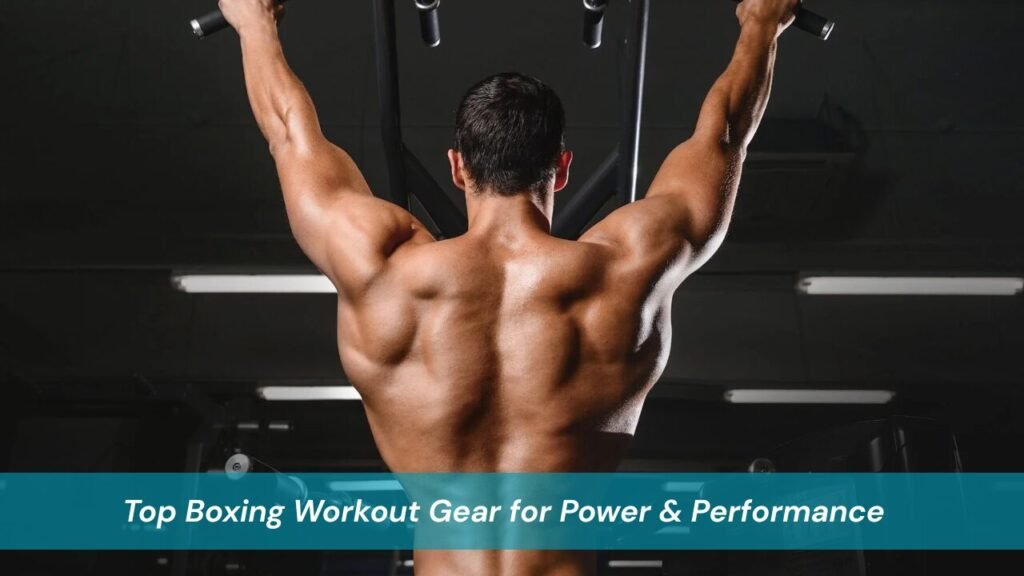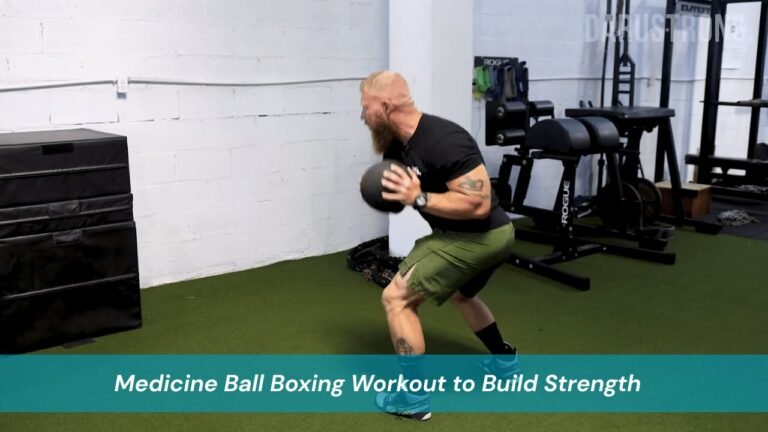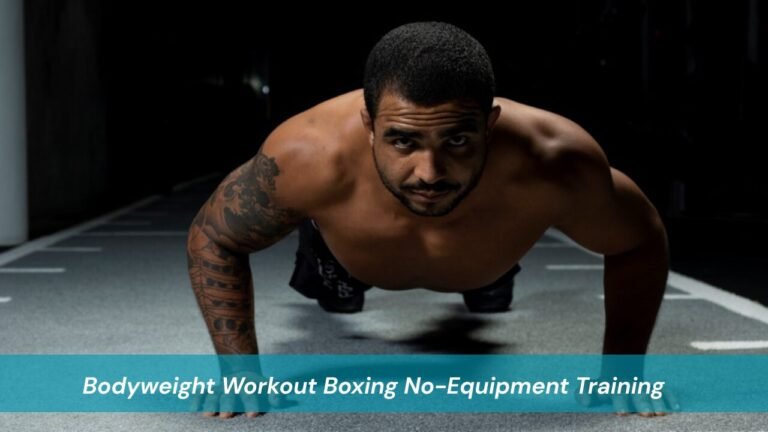When it comes to improving strength, endurance, and overall technique, having the right boxing workout gear is just as important as the hours you spend training. Many beginners underestimate the value of equipment, thinking that boxing is purely about skill and fitness. However, seasoned fighters and coaches will confirm that the right gear not only enhances performance but also plays a vital role in safety and consistency. Whether you’re stepping into a boxing gym for the first time, shadowboxing in your garage, or preparing for an amateur competition, equipping yourself properly ensures that you train harder, recover faster, and avoid unnecessary setbacks caused by injuries.
Why the Right Gear Matters in Boxing
Boxing is a sport of precision, discipline, and resilience. Every jab, hook, or uppercut puts stress on the body, particularly the hands, wrists, ankles, and shoulders. Without proper equipment, this stress can quickly lead to sprains, cuts, bruises, and even long-term injuries. Investing in reliable gear is not about luxury; it is about creating the foundation for safe and effective training. Good gloves cushion your fists against impact, hand wraps stabilize delicate joints, boxing shoes provide balance and speed, and protective items like headgear and mouthguards reduce risks during sparring.
Beyond safety, there is also a psychological factor. Wearing well-fitted, quality gear boosts confidence. When you know your hands are protected and your shoes give you stable footing, you can focus more on refining technique instead of worrying about discomfort or possible injuries. This is why even beginners benefit from choosing carefully rather than settling for makeshift alternatives.
Essential Equipment for Every Boxer
At the heart of boxing are gloves. They are the signature item of the sport and perhaps the most important. Gloves protect both the wearer and the opponent or punching bag. They come in different sizes and weights, usually ranging from 10 to 16 ounces. Lighter gloves are often used for bag work to build speed, while heavier ones are preferred for sparring because of the additional padding. The fit should be snug but not overly tight, and the wrist support should feel secure enough to prevent twisting during punches.
Hand wraps complement gloves by adding another layer of protection. Many beginners skip them, but this is a mistake. Wraps keep the small bones of the hand aligned and shield the knuckles from repeated impact. They also absorb sweat, which helps maintain the condition of gloves for longer periods. A boxer who trains regularly will quickly notice the difference in comfort and durability when using wraps consistently.
The punching bag is another cornerstone of training. A heavy bag builds raw power and stamina, a speed bag enhances rhythm and timing, while a double-end bag sharpens reflexes and accuracy. Choosing the right type depends on your training goals. Most boxers eventually incorporate more than one style to develop a balanced skill set. For example, a session may include rounds on the heavy bag for power, followed by the speed bag for coordination.
Footwork is a critical aspect of boxing, and ordinary sneakers do not support the movements required. Boxing shoes are lightweight, designed with thin soles for quick pivots, and built with ankle support to prevent twists. Wearing running shoes or casual trainers can slow you down and make you more prone to injury, while proper boxing shoes improve balance and agility.
Protective equipment becomes indispensable when sparring enters your routine. Headgear helps reduce the risk of cuts, bruises, and concussions, though it does not eliminate impact completely. Choosing headgear with the right balance of padding and visibility ensures safety without sacrificing awareness. Alongside headgear, a mouthguard is essential. Even in light sparring, unprotected teeth and jaws are vulnerable, and a well-fitted guard dramatically lowers that risk.
Conditioning tools like the jump rope may look simple but are highly effective. Skipping ropes build stamina, coordination, and speed, all while mimicking the constant movement required in the ring. Many professionals credit jump rope training as one of the key reasons for their improved footwork and endurance. Additional gear such as groin protectors, moisture-wicking clothing, and a sturdy gym bag may not always be highlighted but they significantly improve comfort, organization, and overall training consistency.
Factors to Consider When Choosing Boxing Equipment
Selecting boxing workout gear requires more than just buying the most expensive option. Your training level, frequency of practice, and individual goals should shape your decisions. A beginner might only need one reliable pair of gloves, a set of wraps, and shoes to start, while an intermediate or advanced boxer may need multiple gloves for different purposes, several types of bags, and high-quality protective equipment.
Comfort and fit are always the top priorities. Poorly fitted gloves or shoes can cause blisters, strain, and injuries. Durability is another factor, as cheaper gear may wear out quickly and force you to repurchase sooner. For those who train multiple times a week, it is often more economical in the long run to invest in high-quality gear that withstands regular use. Trusted brands such as Everlast and Title Boxing have built reputations for delivering consistent quality, which is why they remain popular with both beginners and professionals.
Maintaining and Caring for Your Gear
No matter how high-quality your equipment is, neglecting care will shorten its lifespan. Gloves and wraps should be aired out after each training session to prevent bacterial buildup and unpleasant odors. Using glove deodorizers or allowing them to dry thoroughly makes a significant difference. Hand wraps can be machine washed after every use, ensuring they remain hygienic and effective.
Shoes should not be worn outside the gym, as this reduces their traction and wears down the soles prematurely. Headgear and mouthguards require regular cleaning to remain safe and comfortable. By building a routine of care, you not only extend the life of your boxing workout gear but also maintain a higher standard of hygiene and performance.
Common Mistakes to Avoid When Buying Gear
Many newcomers to boxing fall into avoidable traps when purchasing equipment. One mistake is buying gloves that are too light for sparring, which increases the chance of injury. Another is skipping hand wraps entirely, leaving hands vulnerable to strain. Some boxers rely on running shoes for footwork, which lack the specific design needed for boxing movement. Others focus only on price, choosing the cheapest options, and end up spending more when those items quickly wear out. Understanding the role of each item and investing wisely prevents frustration and ensures smoother progress in training.
Expert Tips for Maximizing Your Gear
Experienced coaches often emphasize that boxing workout gear is only as useful as how you use it. Learning to properly wrap your hands before training is just as important as owning the wraps themselves. Breaking in gloves by gradually increasing usage helps them mold to your hand shape for greater comfort. Shoes should be chosen based not only on style but also on how well they support your specific stance and movement style. Protective gear, such as headgear and mouthguards, should be replaced periodically to ensure safety standards remain effective. By following these expert tips, you turn your gear into tools that work with you, not against you.
FAQs
Do I need to buy the most expensive gear to be safe?
Not at all. Safety comes from proper fit and correct usage, not just the price tag. While high-end gear lasts longer, beginners can start with mid-range items and still train effectively.
How many pairs of gloves should a boxer own?
Many boxers eventually keep at least two pairs: one for bag work and another for sparring. This prevents wear and ensures each pair performs its function well.
Can I use my gym sneakers for boxing?
Although possible, gym sneakers are not recommended. Boxing shoes are specifically made for the quick, sharp movements of the sport and offer superior ankle support.
How often should boxing gear be replaced?
It depends on usage. Gloves typically last one to two years with regular use, while mouthguards should be replaced more often for hygiene. Shoes and protective equipment should be replaced once they lose stability or padding.
Conclusion
Investing in the right boxing workout gear is about more than appearances. From gloves and wraps to shoes, mouthguards, and conditioning tools, each piece plays a vital role in protecting your body and improving your performance. By choosing reliable equipment, maintaining it properly, and upgrading when necessary, you create the foundation for safe, effective, and rewarding training. Boxing demands discipline, and having the right gear ensures that every drop of sweat takes you closer to your goals. Whether you are a beginner aiming to build fitness or an advanced athlete preparing for competition, your success in the sport begins with the equipment you trust.




